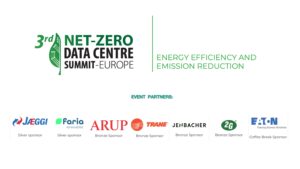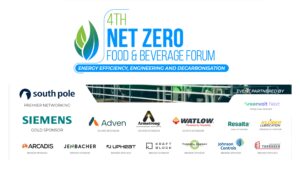Pyrolysis is a new path to true carbon-negative industrial processes. The thermochemical decomposition technology produces organic material into biochar, bio-oil, and syngas. This is under oxygen-free conditions, securely sequestering carbon with valuable products. Pyrolysis differs from traditional carbon reduction techniques, limiting emissions without actively removing CO₂ from the carbon cycle since it sequesters carbon in biochar. The technology’s versatile nature across different industries is what makes it so attractive for hard-to-abate industries. It includes those seeking alternative, sustainable means in their road to net-zero operations. This article explores pyrolysis techniques, industrial applications, and economic considerations for deployment in energy-intensive industries.
Advanced Pyrolysis Techniques for Industrial Applications
Pyrolysis processes have made deep changes over the last few years. It has led to new avenues of carbon sequestration in industry. Through such developments, conventional carbon-based sectors can now achieve negative emissions along with making useable byproducts. Let us take a look at some of the advanced pyrolysis techniques aiding in achieving the same:
Fast Pyrolysis Systems
Rapid pyrolysis techniques maximize liquid bio-oil production through fast heating (400-600°C) and short residence times (1-5 seconds). Furthermore, modern industrial systems show fluidized bed reactors with good heat transfer and exact temperature control. Moreover, it is possible to produce up to 75% of bio-oil in the process. It is a prospective renewable chemical and fuel feedstock. Commercial-sized fast pyrolysis facilities processing 5-50 tons per hour of biomass have been developed by BTG Bioliquids and others. This demonstrates the technology’s feasibility for industrial scale-up.
Slow Pyrolysis for Biochar Maximization
Slow pyrolysis is more favorable to biochar production using longer residence times (hours) at lower temperatures (300-400°C). Furthermore, slow pyrolysis produces stable carbon forms that can sequester carbon for centuries. New technologies include continuous feed systems and heat recovery systems. These improve energy efficiency by up to 40%. Moreover, agricultural and forestry residues, which are slow-pyrolysis treated, provide up to 70-90% high fixed carbon-containing biochar. This is with soil improvement and carbon sequestration that enhances crop yield in agriculture while locking in carbon for extended periods.
Microwave-Assisted Pyrolysis
Cutting-edge microwave pyrolysis techniques utilize electromagnetic energy as a means for quickly, evenly heating the materials of feedstocks. The method conserves 25-40% of energy compared to conventional heating processes. It also enables precise control of temperature. Furthermore, the technology finds particular application for treating heterogeneous waste streams. It includes municipal solid waste or mixed industrial residues. Moreover, volumetric heating eliminates temperature gradients. This results in better product quality and greater conversion efficiency with various feedstock types. It is one of the smartest pyrolysis techniques for industrial decarbonization.
Catalytic Pyrolysis Systems
Catalytic pyrolysis uses specialized catalysts that direct decomposition pathways to desired high-value products. In addition, zeolites, metal oxides, and transition metal catalysts can enhance yields of aromatic compounds by as much as 60% in the resultant bio-oil. The systems are lower-temperature-operating (350-450°C) than conventional pyrolysis. Consequently, it decreases overall energy inputs while generating more uniform, higher-quality products. In addition, strategic control over reaction kinetics allows for tailored molecule manufacturing. It is of greatest value to the pharmaceutical and advanced materials sectors requiring cost-effective, resource-sustainably sourced building blocks with specific structural and functional features.
Pyrolysis For Carbon-Negative Processes: Industrial Applications and Carbon Sequestration Potential
Pyrolysis processes offer a customized answer to various energy-dependent industries. This is accompanied by individual feedstock availability and product specifications. Such applications are used to illustrate pyrolysis’s capability for converting waste streams into valuable products with carbon negativity. So, let us take a peep at its applications in various industries and potential:
Implementation in the Steel and Metal Industry
The steel sector can apply pyrolysis techniques to process plastic packaging and biomass residue waste into reducing agents used in ironmaking. New reactor technologies now process mixed waste streams with different moisture levels. It generates syngas with heating values of 15-20 MJ/m³. In addition, the process conserves metallurgical coke requirements by 15-25% and sequesters carbon in process residues. Additionally, Organizations such as ArcelorMittal’s carbon-smart programs utilize pyrolysis techniques to treat 40,000+ tons of waste per year. This shows significant efforts towards their carbon neutrality aspirations.
Chemical Production Revamp
Pyrolysis techniques are also being complemented by chemical manufacturers to generate chemical precursors from plastic waste and biomass. This is replacing fossil-based feedstocks. New reactor designs with optimized heat transfer surfaces improve the efficiency of conversion to over 85% for appropriate feedstocks. Furthermore, pyrolysis oils generated contain useful aromatic compounds, olefins, and other chemical building blocks. These can be separated using existing separation processes. Moreover, BASF and others are scaling up these technologies to process tons of waste an hour. This helps to create circular material flows in their production processes.
Uses in Cement Production
Pyrolysis processes can minimize the greenhouse gas emissions of cement factories by utilizing alternative fuels such as biomass residues and non-recyclable plastics. Zero-emission energy syngas and biochar are generated in high-temperature rotary kiln pyrolysis operations. This can be used to replace some of the traditional clinker in cement blends. Moreover, this dual-pronged approach reduces process and embodied carbon in the production of cement by 15-30% compared with conventional technology. Additionally, several European cement makers are already pilot-testing such hybrid pyrolysis systems in an attempt to meet aggressive reduction targets for emissions.
Pulp and Paper Industry Solutions
The pulp and paper industry provides an opportunity for pyrolysis integration from the vast biomass waste streams such as bark, sawdust, and black liquor with high lignin concentration. Advanced pyrolysis facilities convert such residues to bio-oil. This supplements natural gas use in lime kilns or powers cogeneration plants. Furthermore, the produced biochar enhances forest soil health in managed forests, which supply biomass to pulp mills for operations, and a closed-loop carbon management is created. Additionally, the application of pyrolysis techniques in pulp mills has the potential to decrease the fossil fuel consumption by 40-60%. It can also sequester 0.3-0.5 tons of carbon per ton of biomass that is being pyrolyzed.
Pyrolysis For Carbon-Negative Processes: Economic Feasibility and Deployment Challenges
The transition to carbon-negative industrial processes through pyrolysis techniques involves prudent economic assessment and strategic planning. These considerations raise possibilities and challenges of implementing such technologies on a mass scale. So, let us see a few of them:
Capital Investment Needs
Industrial-scale pyrolysis systems need high initial capital requirements. It typically ranges from $5-20 million, which is scale- and complexity-dependent. Furthermore, modular designs have now come up to make capital costs lower. It allows phased implementation starting at $1-3 million for small-scale units. Moreover, return on investment usually spans 3-7 years, with economics getting better once carbon pricing mechanisms mature. Additionally, funding innovations like green bonds and climate technology funds now specifically target negative-emission technologies. This allows for more access to capital for industry pyrolysis projects.
Operational Economics and Value Chains
The operational economics of industrial pyrolysis methods are largely dependent on carbon credit value, feedstock price, and product prices. Furthermore, processing costs between $30-80/ton of feedstock are offset by revenue from the value of syngas energy, biochar ($500-2,000/ton), and bio-oil ($0.50-1.20/liter). The most favorable economic performance is that of integrated plants having all the product streams. Moreover, carbon credit markets are now assigning a greater value to biochar sequestration at $30-150 per ton of CO₂ equivalent. This significantly improves project economics as more mature markets and standardized verification practices become common.
Technical Integration Challenges
Industrial integration creates technical challenges. It includes feedstock preparation, heat control, and managing product quality. Furthermore, feedstock heterogeneity requires robust pre-processing infrastructure and adaptive control strategies to enable consistent operation. The heat integration with existing processes also has the capability of increasing overall efficiency by 20-30%, but requires advanced engineering to secure safe implementation. Moreover, advanced systems bring predictive maintenance, continuous monitoring, and automated tuning of parameters together. It provides optimum performance under changing operating conditions and feedstock characteristics.
Regulatory and Market Development
The carbon-negative technology’s regulatory landscape is evolving rapidly, with consequences for pyrolysis deployment. Carbon price mechanisms increasingly capture negative emissions, at $20-100 per tonne of CO₂ equivalent across jurisdictions. Furthermore, product certification systems for biochar and bio-based chemicals are being harmonized. This improves market access and value recognition. Additionally, progressive politics in the EU, Canada, and parts of the US increasingly include dedicated provisions for carbon removal technology. This offers incentives on top of customary carbon reduction credits for truly carbon-negative industrial processes.
To Sum Up
Pyrolysis techniques offer a paradigm shift in making energy-intensive industries carbon-negative with high-value waste-stream products. As these technologies become more mature and scalable, they offer genuine solutions for near-term deployment in a range of sectors requiring decarbonization solutions. The establishment of dedicated pyrolysis systems specific to certain industrial processes evidences the versatility and promise of this method as part of an inclusive climate policy.
To find out more about these innovations/ connect with industry leaders driving carbon-negative technologies, register for the Net-Zero Energy Intensive Industries Summit. It takes place on May 6th-7th, 2025, in Berlin, Germany. The conference unites industry players from the metal, chemicals, cement, pulp and paper, & glass industries. They will share insights, case studies, and more on various areas like sustainable CAPEX management, operationalizing sustainability, AI/IoT/Automation, and much more. So, register now!




